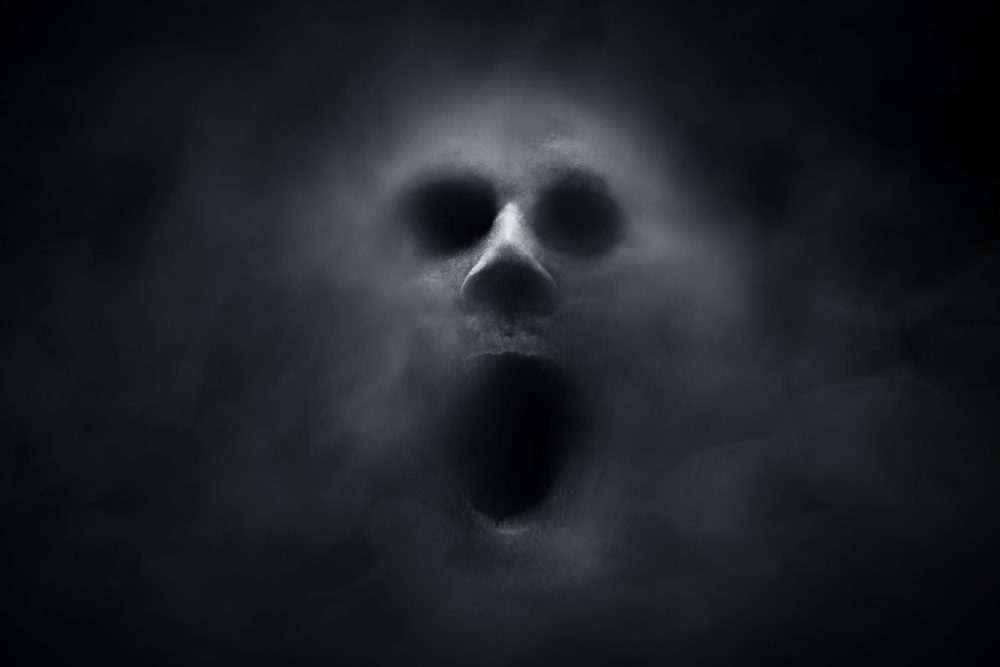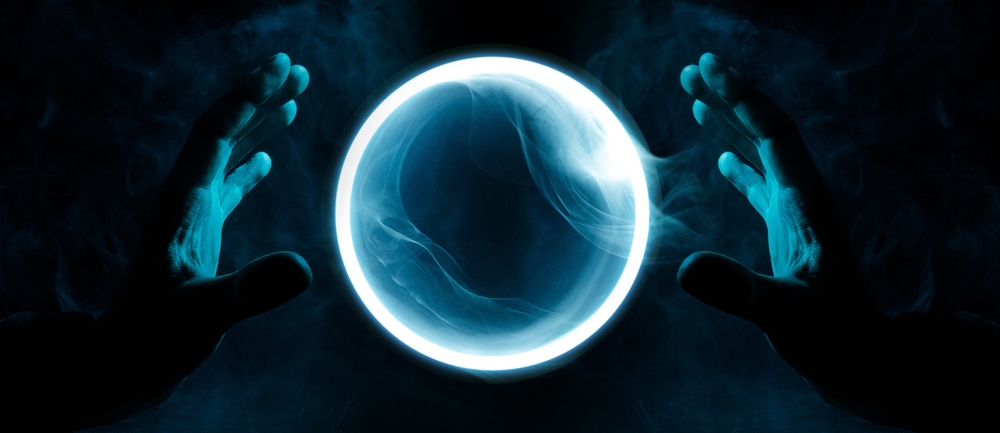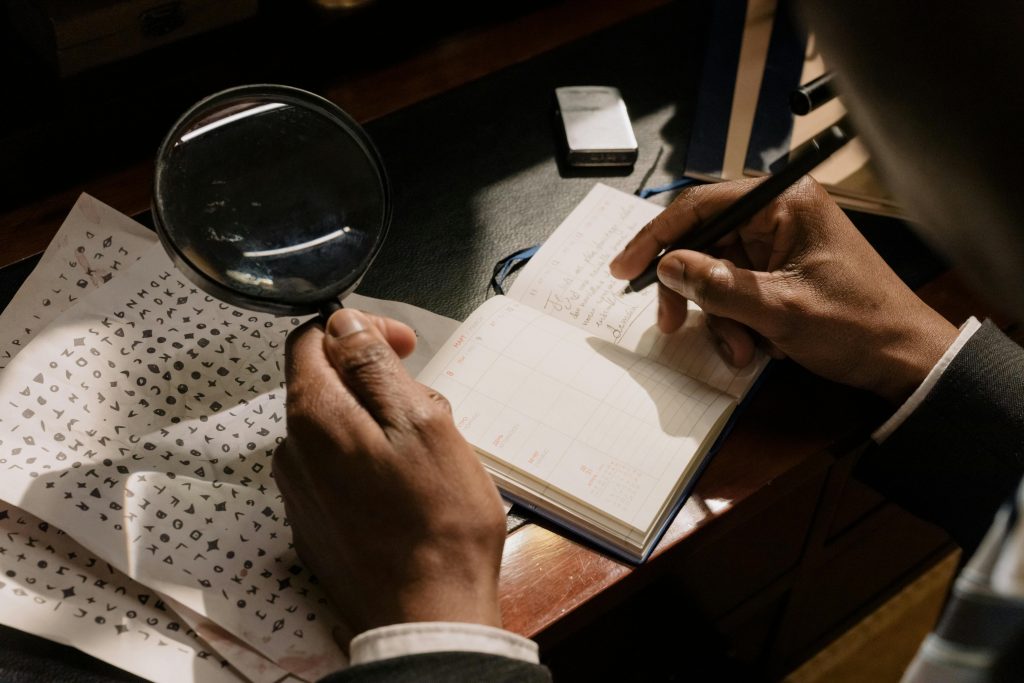Your cart is currently empty!
Ghost That Screamed Photo’ Taken After Boy, 16, Died in Car Crash is ‘Proof of the Afterlife’

What if a photograph could capture more than just a moment what if it held a scream, frozen in time?
In the winter of 1984, a fog-drenched Minnesota road became the site of a tragic car crash that claimed the life of 16-year-old John Boulware. Days later, as routine police photos from the scene were developed, one image ignited decades of debate. Hovering above the wreckage was what appeared to be the ghostly face of a young man mouth open, contorted in agony seeming to scream from beyond the veil.
To some, it was proof: the soul caught in the act of leaving the body. To others, it was a tragic misinterpretation a trick of light, timing, and the flawed honesty of analog photography.
Nearly 40 years later, the photo known as “The Ghost That Screamed” continues to haunt not just believers and skeptics, but a grieving family caught in the glare of public obsession. What did this image truly capture? And why, in an era saturated with images, does this one refuse to fade?
The Tragedy That Sparked the Mystery
December 27, 1984, was supposed to be a night of music and excitement. Sixteen-year-old John Boulware and three friends from Highland Park High School in St. Paul, Minnesota, had tickets to see Prince perform live a dream outing for any teen growing up in the heyday of the Purple One. But just miles from the venue, their night ended in disaster.
As the group traveled along Edgecumbe Road, a fog had settled heavily over the city, blurring visibility and cloaking the roads in a quiet, eerie haze. At approximately 7:15 PM, the driver another teenager lost control of the vehicle on a curve near Highland Park Golf Course. The car careened off the road and slammed head-on into a tree at an estimated 40 miles per hour.
When police arrived on the scene, they found a grim tableau. Three of the teens had made it out of the vehicle with relatively minor injuries, but John was still inside motionless, partially wedged beneath the dashboard on the passenger side. Officer Brian Coyle, one of the first responders, later recalled that John appeared almost peaceful, as though he were sleeping. But the truth was devastating: the impact had broken his neck, causing fatal internal hemorrhaging. He was pronounced dead at the scene.
The tragedy was a shattering blow to the community. For John’s family and friends, the loss was immediate and unimaginable. He was a bright, passionate teenager with a love of music and a future brimming with possibility. In any other world, his name might have faded quietly into memory, mourned privately by those who loved him.
But something happened in the days that followed something in the images captured that night that would ensure John Boulware’s name would be remembered far beyond St. Paul. The grief of one family would become the fascination of thousands. The tragedy was only the beginning.
The Photo That Shocked Investigators

For Officer Brian Coyle, photographing crash scenes was routine a clinical part of documenting evidence. That night in St. Paul, after the wreckage had been cleared and the surviving teens taken for treatment, he loaded his 35mm film into the department’s property room and moved on to his next case. There was no reason to expect anything unusual. But a few days later, a call from the photo lab technician disrupted that assumption.
“You need to come down here. There’s something I need to show you.”
Among the developed frames from the crash site was an image that would shake even the most grounded observer. Floating above the wrecked vehicle directly above where John Boulware had been sitting was what appeared to be a human face. Not a blur. Not a shadow. A face, screaming, contorted in pain, with features eerily similar to John’s own. Coyle described it as having “distinctive hair and a distinct profile,” a visual so unsettling that even years later he could not speak of it without hesitation. “It appeared to be in agony,” he said in a 2015 interview. “A scream.”
More than just a chilling apparition, the image showed anomalies that confounded experts at the time. Streaks of red and white light sliced through multiple frames, visual elements that hadn’t been present during the shoot. Attempts to rationalize the photo led nowhere. Coyle brought the images to several photo developers and technicians. Some could offer piecemeal theories about the light patterns, but none could account for everything happening in that single frame.
“There’s no explanation in my mind,” Coyle insisted. “And the experts haven’t been able to give me an explanation either.”
The photo quickly gained notoriety. Dubbed “The Ghost That Screamed,” it was unlike anything seen in official law enforcement documentation. Unlike many ghost stories rooted in folklore or secondhand tales, this one had visual evidence and that changed everything.
For believers, the image became a rare, tangible link between life and death. For Coyle, a seasoned officer with no previous interest in the paranormal, it was a deeply unsettling moment that challenged the limits of what he could accept as real. And for John Boulware’s family, it marked the beginning of a second trauma one in which their private loss was transformed into a public mystery.
Paranormal Interpretations and Believers’ Perspective

To those who believe in the possibility of life beyond death, the “Ghost That Screamed” photo was not just a chilling anomaly it was evidence. For many, it captured something that science and logic had long struggled to validate: a soul, caught in the very moment it leaves the body.
Celebrity psychic Matt Fraser, known for his work on When Heaven Calls, called the photo “truly profound.” In interviews, he described seeing in the image not just a face, but a soul in “transition” suspended between life and the afterlife. “It looks like a man screaming, rising above the wreckage,” Fraser said. He interpreted the anguished expression not as pain or fear, but as disorientation a soul unaware it had died. According to him, such confusion is common in sudden or traumatic deaths.
Fraser also claimed to see more than just a human face in the photo. In his analysis, the image included the faint figure of a dog believed by some to be John Boulware’s deceased pet, waiting to guide him to the other side. “It’s very common for a person to be greeted by loved ones and spirit guides in their final moments,” he said, framing the photograph not just as a haunting, but as a spiritual reunion. “They appear not only to comfort, but to help ease the transition and remind the soul that they are not alone.”
Tarot reader Angie Banicki added another emotional layer to the interpretation. Using her cards, she saw the face not as angry or vengeful, but surprised a boy swept too quickly from the world he knew. “He is surprised and yelling out in search of understanding,” she told Daily Mail. “There’s no anger in his face… just confusion about how he was going.”
For believers, the image speaks directly to long-held spiritual convictions: that the soul is real, that death is a passage not an end and that love and connection persist beyond the body. It’s this interpretation that makes the photo resonate so deeply with people grieving their own losses. In the ghostly scream, they see echoes of the questions we all ask: What happens when we die? Will someone be there waiting for us?
Still, not everyone agrees on what the photo shows. And as compelling as the spiritual explanations may be, they are not the only lens through which this image has been examined. In the next section, we turn to the skeptics and to the science behind why our eyes and our beliefs don’t always align.
Scientific and Skeptical Analysis

Professional photographer Chuck Sanders was among the first to publish a detailed breakdown of the image’s visual artifacts. His conclusion? The so-called “screaming soul” was the unintended result of long exposure photography, motion blur, and the flash used in low-light conditions. “The smeared face, semi-transparent head, and light trails all support this conclusion,” Sanders wrote. “It’s a strong example of how photography can unintentionally create eerie and surreal effects.”
This explanation hinges on how 35mm film cameras work particularly in low light. When a shutter remains open for a longer-than-usual duration, any movement, including handheld camera shifts or shifting light sources, can cause ghostly distortions. In this case, multiple elements were likely in play: the foggy night, the reflective surfaces of the crashed vehicle, the flashing lights from emergency vehicles, and movement around the scene.
Saradawn Miller, a photography instructor and former camera store manager, added that such anomalies were not uncommon in pre-digital photography. “There are reflective lights on the vehicle and so many things can cause a reflection, including the shiny badge and buttons on a police uniform,” she noted. She also pointed out signs of double exposure a mechanical or user error that can occur when a roll of film is improperly advanced and exposes the same frame twice.
Perhaps most convincingly, skeptics argue that the ghostly face doesn’t belong to a spirit at all but likely to a living person on the scene. The blurred figure, some say, may have been Officer Coyle’s partner, Mike Kempe, or a paramedic captured mid-motion. Clues include a faint outline of what resembles a police uniform shoulder patch and the glint of a badge near the apparition’s neck details that suggest a very earthly source.
Moreover, controlled recreations under similar conditions have yielded similar results. Using long exposures and handheld flashes, photographers have replicated streaks of light, translucent figures, and ghostly double faces no spirits required. These visual illusions, while unsettling, are grounded in the physics of light and the mechanics of film.
In essence, skeptics don’t dismiss the emotional weight of the photo. They understand why people see what they see especially in the context of sudden loss and lingering grief. But they argue that the image is not paranormal; it’s perceptual. As Sanders put it: “If I were a firm believer in ghosts, I’d still say it’s not one—because I understand the science behind the camera.”
When Tragedy Becomes Spectacle
For John Boulware’s family, the photo that captured international attention was never a mystery to solve it was a painful reminder of the worst day of their lives. Yet for decades, their private grief has been eclipsed by the sensationalism of a single image. As the photograph circulated in tabloids, internet forums, TV shows, and paranormal documentaries, John’s identity was slowly reduced to a ghost story, his life overshadowed by the claim that his soul was “screaming” from beyond the grave.
The emotional toll of this transformation is hard to quantify. Every viral resurgence of the photo drags the Boulware family back into the public eye, often without their consent. Discussions focus less on John as a son, a friend, a music-loving teenager, and more on his supposed spectral agony. The story is told and retold with phrases like “proof of the afterlife” and “haunted photo,” leaving little room for compassion or nuance.
This exploitation isn’t unique. In the age of viral media, tragedy is often distilled into spectacle especially when tinged with the paranormal. Compelling visuals become clickbait. Grief becomes entertainment. And those most affected are rarely part of the conversation.
Some of the loudest voices promoting the photo have been those with something to gain: television psychics promoting books, show producers chasing ratings, and amateur investigators building online followings. Few of them if any have publicly addressed how their interpretations might impact the people who loved John. One psychic even acknowledged wanting to show the photo to her students, highlighting the shift from respectful remembrance to object of curiosity.
The Human Cost of a Viral Legend
Nearly 40 years after the photograph was taken, the debate continues spirited, emotional, and unresolved. Was it a soul in transition, a visual echo of life interrupted? Or simply a technical illusion, misunderstood in the haze of grief and mystery? For some, it offers comfort and hope; for others, it’s a lesson in critical thinking and photographic science.
But perhaps the most enduring question isn’t whether the photo proves the afterlife. It’s what we choose to see in it.
Do we see a teenager whose life was tragically cut short, remembered more for a ghost story than for who he was? Do we see an opportunity to reflect on how we process loss, and how desperately we search for meaning in moments of heartbreak? Or do we see a reminder that every story especially one tied to real human pain deserves respect, context, and care?
As long as this image exists, it will invite speculation. But we owe it to John Boulware and to a
ll those whose tragedies become headlines to see more than just a face in the fog. We must see the person behind it, the family still carrying the weight, and the responsibility we all share in how we tell stories born from grief.
